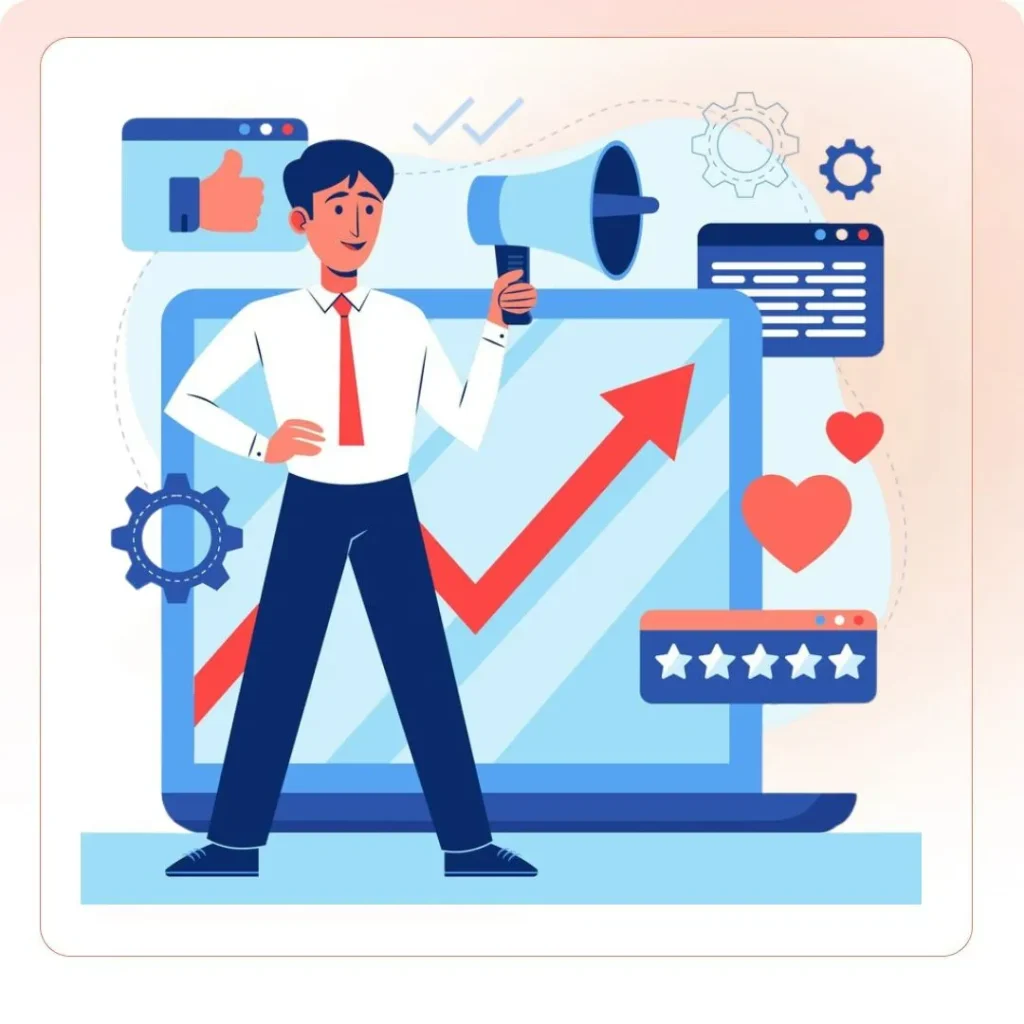In today’s fast-paced digital world, capturing attention and converting it into meaningful engagement is more challenging than ever. Among the most effective strategies in the mobile marketing toolkit are swipe-up ads—a format that has rapidly gained traction across Instagram, Snapchat, Facebook Stories, and YouTube Shorts.
But what makes these vertical ads so powerful isn’t just their sleek format—it’s the underlying psychology and neuromarketing tactics that trigger instant user response. By understanding how the brain reacts to visual cues, urgency, and motion, marketers can create swipe-up campaigns that not only engage but convert.
Whether you’re running an e-commerce brand or a tech startup, partnering with a Top digital marketing company in Delhi can help you leverage these principles to craft swipe-up experiences rooted in brain science and user behavior.
The Swipe-Up Advantage: Why Stories Rule Mobile Screens
Swipe-up ads appear in a full-screen, immersive story format. This visual dominance helps eliminate distractions and ensures that your message lands directly in front of the user. With 80% of social media traffic now on mobile, it’s no wonder that stories have become the go-to format for high-performing digital campaigns.
What sets them apart is their ability to blend gesture-based interactions with storytelling and urgency, creating a psychologically compelling path to conversion.
Read more about Google Ads Strategies
Visual Immersion: Designed to Capture the Brain’s Focus
- Story ads take over the full vertical screen, leaving no room for competing content.
- This immersion minimizes cognitive load, allowing the brain to process the message more efficiently.
- The Reticular Activating System (RAS) is triggered—filtering out other stimuli and honing in on the story.
- Full-screen visuals mimic natural eye movement on smartphones, keeping the user’s attention locked in.
- The result: faster recognition, better message retention, and higher engagement.
Temporal Urgency: Why Scarcity Drives Action
Swipe-up ads are temporary by design—they usually vanish within 24 hours. This built-in deadline taps into a psychological phenomenon known as the scarcity effect, which creates urgency by limiting availability.
Here’s how this urgency impacts behavior:
- The limited-time visibility of stories instills a sense of pressure to act quickly.
- This urgency activates the amygdala, the brain region responsible for fear, anticipation, and decision-making.
- Users experience FOMO (Fear of Missing Out), which often leads to spontaneous and emotional reactions.
- Such emotional cues increase the chances of immediate swipes and higher click-through rates.
This is why time-bound formats outperform evergreen formats—they push users to act now, rather than delay.
Repetition and Familiarity: The Zajonc Effect in Advertising
The Zajonc Effect suggests that people develop a preference for what they see repeatedly. Story ads often appear in short intervals, giving brands multiple exposures within a brief window.
- Repetition helps users recognize and remember the brand, even if they don’t act immediately.
- With each exposure, the emotional resistance to taking action decreases, and trust increases.
- Eventually, the user is more likely to swipe up—not because of hard selling, but because of subconscious familiarity.
For brands looking to build long-term engagement, consistency across stories is a key driver of recall.
Gestural Priming: Leveraging Natural User Behavior
Swipe-up ads benefit from one of the simplest, yet most effective behaviors—natural gestures. Encouraging users to swipe up is intuitive, thanks to gestural priming:
- Visual cues like upward-pointing arrows, animated indicators, or subtle movement encourage users to engage.
- These cues activate the motor cortex, which governs physical responses and makes the action feel instinctive.
- Since swiping is already a native behavior on social platforms, there’s zero learning curve—just smooth interaction.
- This means users are more likely to follow through without pausing or second-guessing.
Smart design makes the CTA feel like part of the user’s instinct, not an interruption.
Emotional Storytelling: Creating Dopamine-Driven Ads
Story ads shine when they blend emotion and narrative. Emotionally charged visuals and messaging can stimulate the limbic system, which governs emotion and memory.
Let’s break it down:
- Emotional stories release dopamine, which enhances memory and connection.
- Ads that reflect user struggles, aspirations, or wins feel relatable and authentic.
- For example, a quick visual of a frustrated student finding success through an app builds emotional traction.
- These micro-stories are more memorable than generic ads because they mirror real experiences.
- Paired with a swipe-up CTA, emotional ads have a higher chance of converting attention into action.
In short, feelings sell—and stories that trigger them work best.
Thumb-Zone CTA Optimization: Making Action Effortless
- The most successful swipe-up ads place their Call to Action in the thumb zone—the most accessible area of the screen.
- This placement takes advantage of how people hold and use their phones, reducing physical effort.
- The CTA feels natural to reach, making the path to conversion seamless.
- When combined with urgency-based messaging like “Claim Now” or “Get 50% Off,” this optimization boosts click rates.
Subtle, strategic CTA placement is the difference between scrolling past and swiping up.
Multi-Sensory Integration: Audio + Motion = Engagement
Swipe-up ads often integrate sound, motion, and dynamic transitions. This multi-sensory experience keeps users engaged longer and increases the likelihood of recall.
- Sound adds emotional context and builds mood.
- Motion holds attention and keeps the content from feeling static.
- Together, they activate multiple neural pathways, improving retention and engagement.
- Studies show that multi-sensory ads outperform text-based or static content by up to 65% in recall.
It’s not just what users see—it’s what they feel and hear that makes a lasting impact.
Instant Gratification: Satisfying the Brain’s Reward System
Swipe-up ads don’t just guide users to generic landing pages. They often deliver something immediate—discounts, app downloads, content access, or personalized quizzes. This plays into the psychology of instant gratification.
- When users get rewarded quickly, the nucleus accumbens (pleasure center) is activated.
- That release of dopamine reinforces the action, making them more likely to engage again in the future.
- This creates a positive feedback loop, where users come to expect satisfying outcomes from swipe-ups.
Delivering quick, meaningful rewards makes the ad feel worth their time and effort.

Conclusion: Merging Brain Science with Marketing Strategy
Swipe-up ads are more than just flashy visuals—they’re rooted in the science of human behavior. By blending emotional resonance, natural gestures, urgency, and sensory design, marketers can create swipe-up experiences that convert at scale.
To truly leverage the neuromarketing potential of swipe-up stories, brands must collaborate with experts who understand both the psychology and the platform. A Top digital marketing company in Delhi can help you strategize, design, and execute high-converting story ads that engage users where it matters most—in their minds.
With the right strategy and scientific understanding, swipe-up ads go from being just a feature… to a powerful conversion machine.

